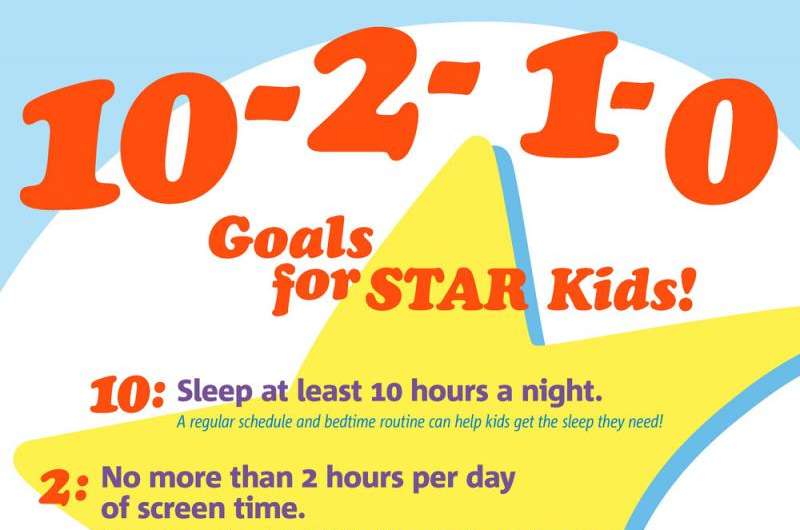Two tested approaches to treating childhood obesity appear effective

A MassGeneral Hospital for Children (MGHfC) study comparing two protocols for the treatment of childhood obesity finds that both were successful in limiting one-year weight gain in obese children. Both interventions, described in a paper published in the April 20 issue of JAMA Pediatrics, combine use of information technology to provide clinicians with the most up-to-date guidelines for the management of obesity in children with tools designed to help families manage behaviors related to obesity and fitness.
"In this clinical trial, we found that an intervention that gave pediatricians point-of-care, evidence-based information on managing their obese patients and that supported behavioral change within families resulted in improved body mass index among 6- to 12-year-old children," says Elsie Taveras, MD, MPH, chief of General Pediatrics at MGHfC and lead author of the report. "Our results suggest that making it easy for clinicians to access the latest treatment guidelines using health information technology, along with providing family support for the necessary behavioral changes, can improve the quality of care for obese children and help them achieve better outcomes."
Taveras and her co-authors note that, while preventing obesity in children is important, helping those who already are obese improve their body mass index (BMI) is even more challenging. Although obesity management guidelines have been available to pediatricians for some time, many previously studied interventions addressing childhood obesity in primary care settings have not been effective. Possible reasons for this include pediatricians' inconsistency in following obesity management guidelines and an over-reliance on in-person guidance by study clinicians. The current investigation - entitled the Study of Technology to Accelerate Research (STAR) - used an electronic health record to provide physicians with clinical decision-support tools and information and offered two levels of support to patients and families.
Participants were recruited at 14 pediatric primary care practices of Harvard Vanguard Medical Associates, a multispecialty group practice in eastern Massachusetts. The practices were randomly assigned to one of three groups, two which provided interventions based on clinical decision support - the use of health information technology to provide clinicians with individualized data and guidelines to guide patient care decisions - and a control group that provided usual care. Parents of children who met eligibility standards - those ages 6 through 12 considered to be obese based on a previously recorded body mass index at or above the 95th percentile for their age and sex - were contacted about their interest in the study prior to an upcoming well-child visit. A total of 549 children enrolled in the study - 194 and 171 in the two intervention groups and 184 in the usual care group.

In the 10 intervention-group practices, medical assistants entered the current height and weight of participating children into the electronic health record at the start of the visit. Upon opening participating patients' charts, pediatricians received an alert if the BMI was in the obese range and were prompted to document an obesity diagnosis, discuss the importance of good nutrition and physical activity with the parents, and provide educational materials designed to help families self-manage behaviors known to contribute to obesity. At 5 of those practices, families were also assigned a health coach who contacted them by phone at 1, 3, 5 and 9 months into the study to review progress toward their goals, discuss any problems encountered and answer questions. Parents in the coaching group were also offered the opportunity to receive twice-weekly text messages or emails providing additional support and information.
At the end of the one-year study period, the average BMI increase of children in both intervention groups was significantly less that it was for those in the usual-care practice group. In addition, clinicians at intervention-group practices did a much better job of documenting patients' BMI status and the counseling they provided regarding nutrition and physical activity - factors considered essential to "high-quality" pediatric primary care. The investigators were surprised that there was no significant difference in BMI improvement between the two intervention groups, but closer analysis revealed that children in the coaching group whose families completed all of the coaching phone calls and received the text/email messages actually had the most improved BMIs of all.
"What was also much better in the coaching group was parents' satisfaction with their health care services," adds Taveras. "While 47 percent of those in the intervention group who were not individually coached indicated they were very satisfied with the program, 81 percent of those who received the coaching were highly satisfied, something that health care systems considering similar types of interventions and those striving to provide family-centered care should take into account." She notes that future studies should investigate whether a 'larger dose' of coaching could further improve outcomes, test additional virtual tools such as teleconferencing for family support, and attempt to extend measures to manage pediatric obesity into the wider community - all of which are being explored in a new study the team is currently conducting. Additional information the STAR study is available at http://www.massgeneralforchildren.org/star.
More information: JAMA Pediatr. Published online April 20, 2015. DOI: 10.1001/jamapediatrics.2015.0182
















